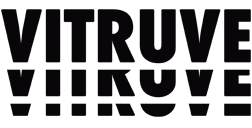5 de June de 2025
How to Gain Strength and Conditioning in Any Sport
Whether you’re training for soccer, swimming, MMA, or tennis, strength and conditioning (S&C) forms the backbone of athletic performance. It enhances speed, power, mobility, endurance, and injury resilience. But to gain strength and conditioning effectively, athletes and coaches need to go beyond general workouts and implement structured, goal-driven programs tailored to the demands of their sport.
This guide breaks down how to build and maintain strength and conditioning for any athlete—and shows you where to find sport-specific programs.
What Is Strength and Conditioning?
Strength training improves muscle strength and endurance by challenging your muscles with resistance, while conditioning enhances your ability to sustain effort over time through cardiovascular and muscular endurance work. Together, they build a well-rounded physical foundation for sport performance.
Together, S&C training prepares your body to meet the physical demands of your sport with more efficiency, power, and control. As explained by the NHS, activities that challenge strength, balance, and flexibility play a vital role in physical development.
How to Gain Strength and Conditioning Effectively
1. Start With a Baseline Assessment
Evaluate strength, endurance, mobility, and power using simple tests like vertical jumps, isometric holds, or push-up maxes. Use this data to build a performance profile and identify areas to improve.
2. Periodize Your Training
Break the year into blocks: off-season (build strength), pre-season (develop power and sport specificity), in-season (maintain performance), and transition phase (recovery). Each phase has distinct training goals and intensity levels.
3. Use Foundational Strength Exercises
Focus on multi-joint movements like squats, deadlifts, push presses, lunges, and rows. These build strength across the whole body and reinforce patterns required in sport.
4. Include Sport-Specific Conditioning
Not all conditioning is the same. Sprinters and swimmers need different energy systems than wrestlers or tennis players. Use conditioning drills that reflect your sport’s work-to-rest ratios.
5. Apply Progressive Overload
Ensure that training becomes progressively harder over time. Add resistance, increase reps, decrease rest, or introduce more complex movements.
6. Monitor Fatigue and Recovery
Recovery is just as important as training. Use subjective measures (like how sore or tired you feel) or objective tools like VBT devices to track how performance fluctuates under fatigue. Learn more in our fatigue guide.
7. Use Velocity Based Training (VBT)
Track bar speed in real time to adapt loads, prevent overtraining, and target specific adaptations (strength, speed, or power). The Vitruve App and VBT Encoder are perfect tools for coaches and athletes looking to optimize performance with real data.

Velocity Based Training 【 #1 VBT Guide in the World 】
Sport-Specific Strength and Conditioning Programs
Each sport has unique physical demands. At Vitruve, we’ve created tailored S&C guides to help coaches build performance programs for different athletic contexts:
- Strength and Conditioning for Soccer
- Strength and Conditioning for Tennis
- Strength and Conditioning for Golf
- Strength and Conditioning for Runners
- Strength and Conditioning for Baseball
- Boxing Strength and Conditioning Program
- MMA Strength and Conditioning Program
- Tactical Strength and Conditioning (TSC)
- BJJ Strength and Conditioning Program
- Wrestling Strength and Conditioning Program
- Strength and Conditioning for Swimmers
Final Thoughts
To gain strength and conditioning in any sport, coaches must combine training science, sport specificity, and athlete monitoring. By leveraging technology like Vitruve’s VBT tools and following sport-tailored plans, you can accelerate performance and reduce injury risk.
For more foundational advice, explore our guide on Strength and Conditioning Principles, Benefits and Programs.
